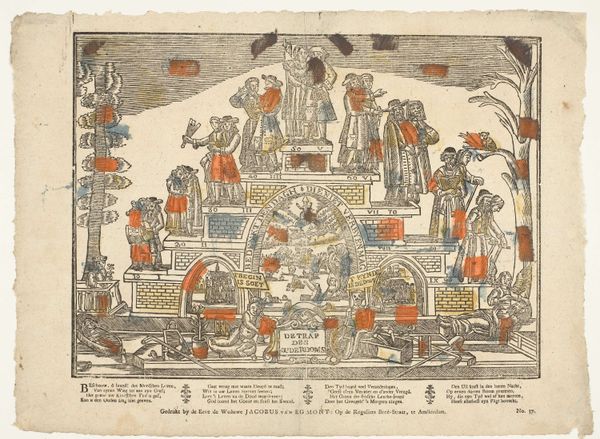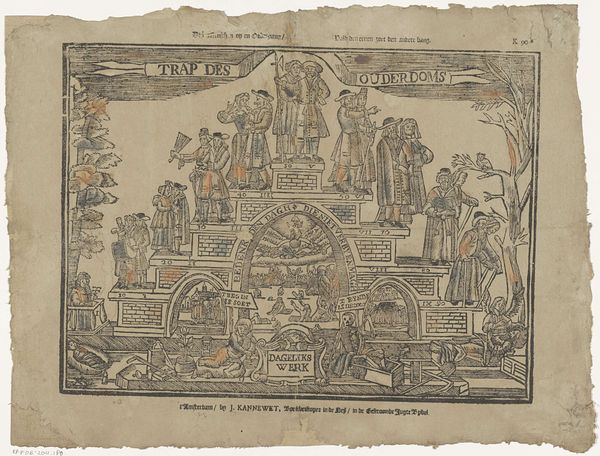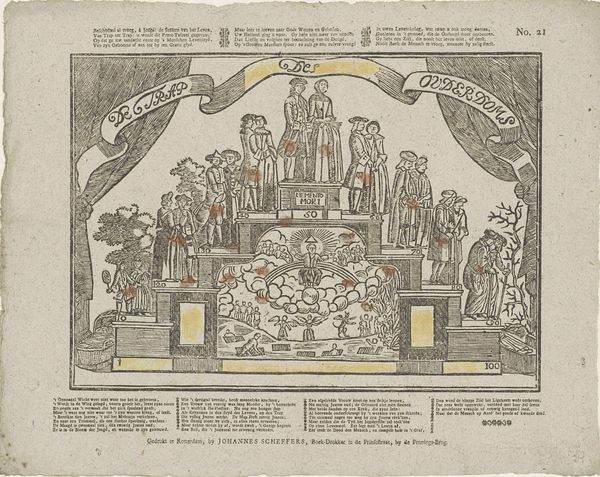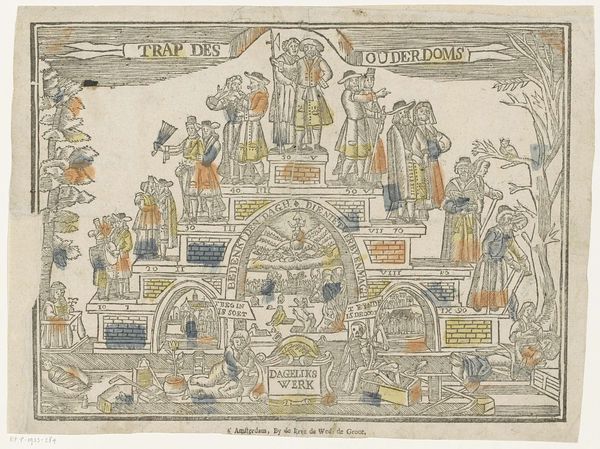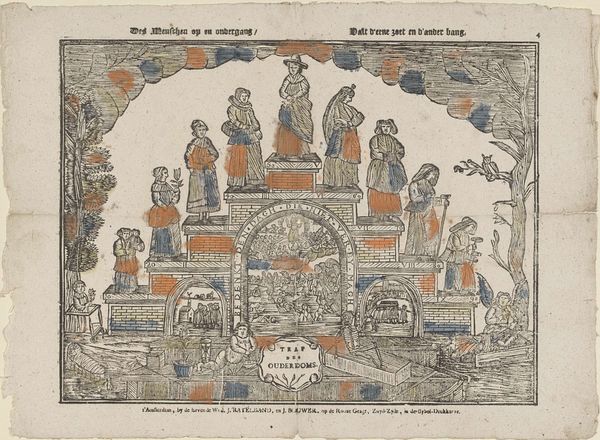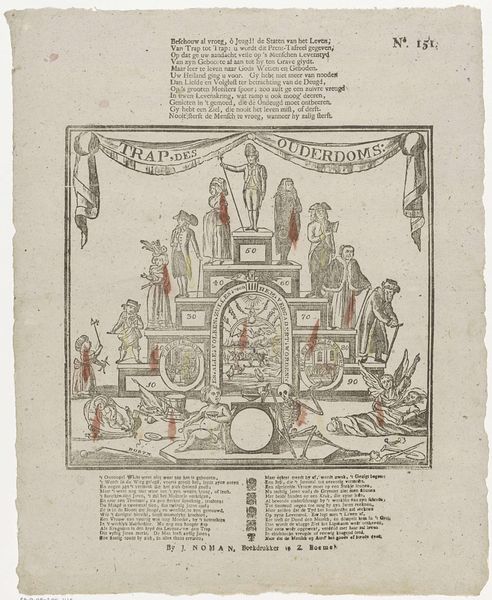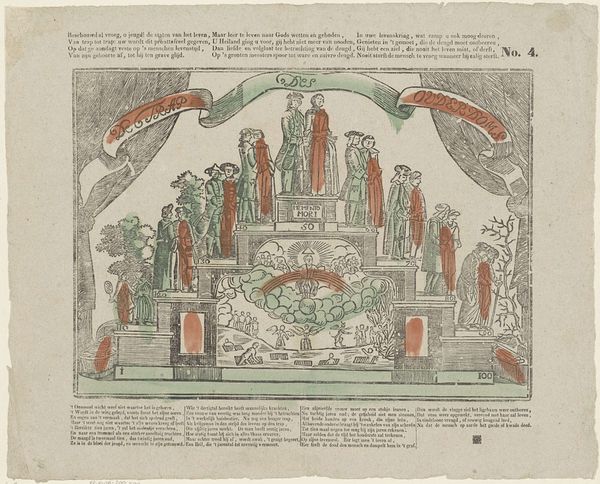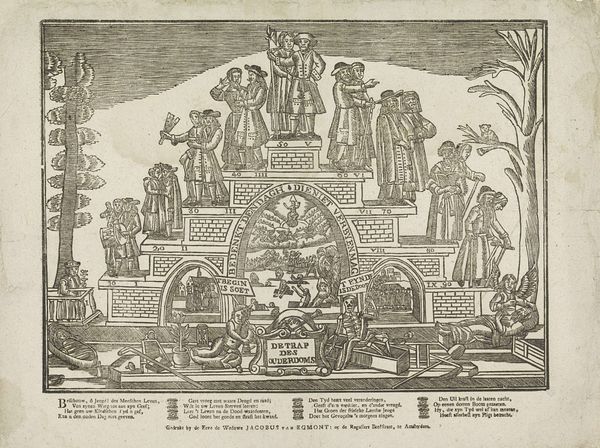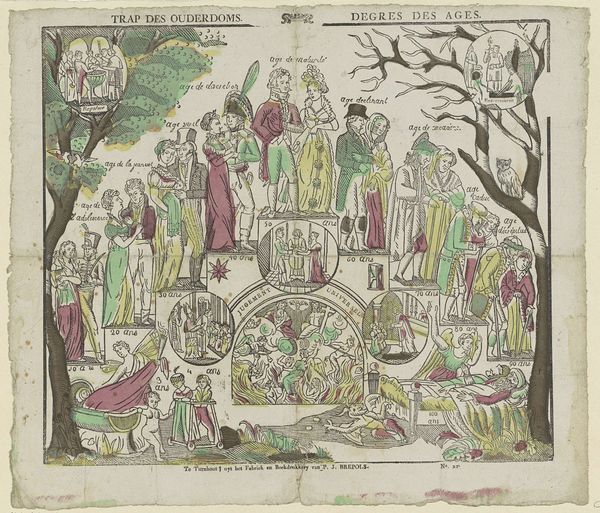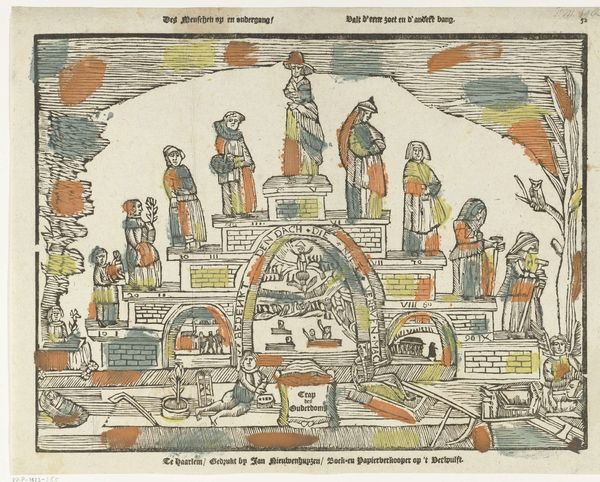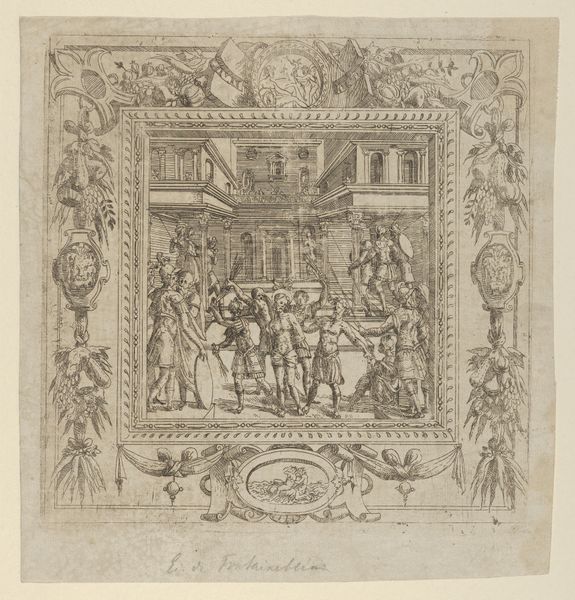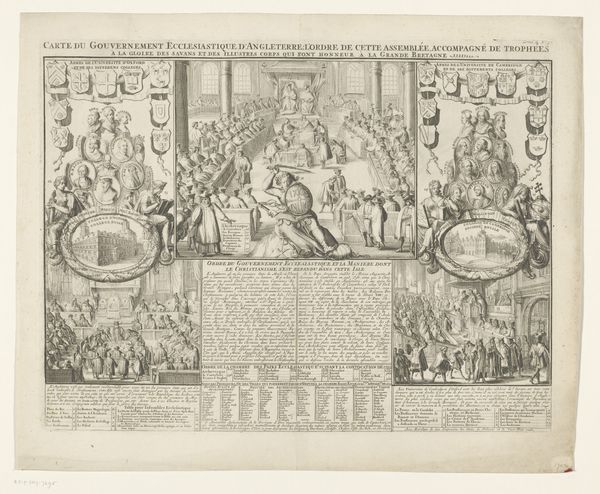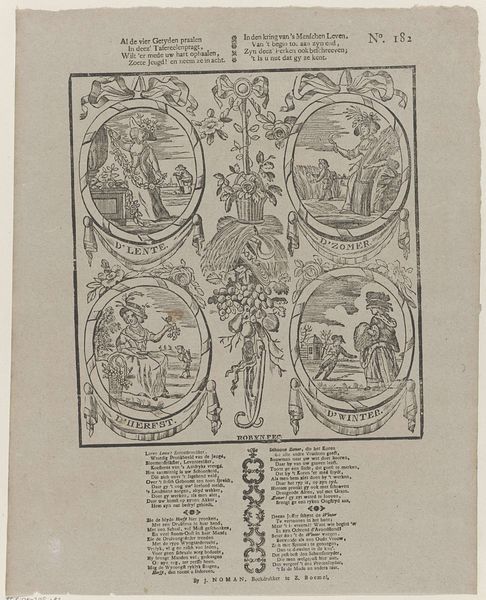
print, engraving
#
narrative-art
#
pen drawing
# print
#
old engraving style
#
personal sketchbook
#
folk-art
#
line
#
genre-painting
#
engraving
Dimensions: height 331 mm, width 415 mm
Copyright: Rijks Museum: Open Domain
Curator: Look at this curious image, “Trap des Ouderdoms,” or "Stairway of Old Age." Barend Koene created this engraving sometime between 1814 and 1830. Editor: It's quite busy! Immediately, I notice this organized chaos leading upward… but not necessarily to anything particularly joyful, judging by what awaits at the bottom. Is it about aging? Curator: Yes, it is a satirical take on aging, presenting life as a series of steps or stages, each marked with an age, climbing a sort of staircase of time. What do you make of the characters depicted on the steps? Editor: There are groups of people shown in what appear to be everyday activities. We have this constant working and making, this endless doing of "Dagelijks Werk" at the very bottom of the staircase of life... with death lurking near the bottom rung. And it continues like that! Is it the story of humanity or what? Each group seems preoccupied and utterly stuck in that specific stage. It seems fatalistic. Curator: Fatalistic indeed, though not atypical for genre paintings during the early 19th century! These scenes likely depict various occupations, pastimes, and perhaps moral qualities associated with different ages. These illustrations were made and distributed to the popular masses as moral instruction tools and offered strong political stances. It uses traditional folk art as social commentary. Editor: The detail is remarkable for an engraving, isn't it? The artist packs in so much detail – you can practically smell the ink and hear the printing press. And there's something so haunting about how stylized they all are. Their doll-like bodies seem almost controlled by these social forces you mentioned. Curator: Engravings, and printed material in general, offered ways to distribute knowledge and narratives in a highly politicized historical moment. How these figures act and are positioned shows the politics of the art. Koene comments here on how people's daily lives dictate and constrain them until death, according to what we're seeing in the engraving at the bottom of the staircase. Editor: Absolutely. It is darkly funny, wouldn’t you say? Almost comforting, in its bleak, unvarnished perspective? Maybe recognizing this inevitability gives us some power. Well, it has given me a lot to think about.
Comments
No comments
Be the first to comment and join the conversation on the ultimate creative platform.
